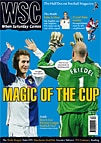 As Argentina's traditional clubs struggle three unlikely teams rise to the top, writes Rodrigo Orihuela
As Argentina's traditional clubs struggle three unlikely teams rise to the top, writes Rodrigo Orihuela
It was the year of the minnow in Argentine football. Two small teams from the suburbs of Buenos Aires – Lanús and Tigre – took the two top places in the championship and a third – Arsenal – won the Copa Sudamericana, second only to the Copa Libertadores. Arsenal’s story is probably the most eye-catching of all since the club, founded in 1957, only reached the top division in 2002. The club were set up by the two Grondona brothers, one of whom, Julio, has been FA chairman since 1979. The team are located in the industrial district of Avellaneda, also the home of giants Racing and Independiente, and have the smallest fan base in the first division – their average crowd last season was just 3,005.
Like so many other things connected to Grondona, who is also a vice-president of FIFA, Arsenal’s cup win was controversial. Mariano Closs, one of Argentina’s leading TV commentators, accused the Paraguayan referee Aníbal Grance of being biased in favour of Arsenal during the first leg of the final, which they won 3-2 away to América of Mexico. Closs did not cover the second leg and subsequent press reports claimed that the FA had pressured the TV network to have him removed. Since their promotion five years ago, Arsenal, now chaired by Grondona’s son Julio Ricardo, have often been accused of getting favourable treatment from league referees due to Grondona senior’s influence.
Lanús’s story is far more straightforward. Founded in 1915 in the district of the same name (next to Avellaneda), Lanús have had several spells in the first division. The club’s darkest year was in 1980, when they dropped to the fourth division and diced with bankruptcy. They have been back at the first level since 1992 and in 1996, under coach Héctor Cúper, won their only other major trophy, the Conmebol Cup, a short-lived South American tournament modelled on the UEFA Cup.
Lanús have made dramatic progress of late: in 2002 they had to play off to avoid relegation and in late 2005 coach Néstor Gorosito resigned in the midst of a long string of defeats. Former junior coach Ramón Cabrero was expected to be only a temporary replacement as he was already 58 and had never coached a first division team before, but Lanús started playing well, qualified for continental tournaments and Cabrero stayed.
The side that did the most to contest Lanús’s title win were Tigre, from a northern suburb. Tigre have spent far more years in the lower divisions than the top, only returning to the first level in 2007 after a 27‑year absence. It is not easy to explain why so many small teams have suddenly come to the fore. Lanús are a rare example in Argentine football of a club with balanced books and a strong local identity, with many players feeling a sense of connection to the club. Tigre, on the other, depend on the generous spending of Sergio Massa, who doesn’t hold an official position in the club but is the man everyone turns to when it comes to key decision-making and getting sponsors and funds. He was also recently elected mayor of Tigre district and until last year held a government position as head of the national welfare system.
The coaches are not the key to the trend, as there is no generational pattern. Though 44, Gustavo Alfaro of Arsenal has been coaching for 15 years. Tigre’s Diego Cagna, 37, is in his first season in charge and is the only one of the three who had a successful playing career. The styles of play are quite distinctive, too. Lanús go in for an attractive passing game while Arsenal and, to a lesser degree, Tigre rely on strength and fitness. While Tigre and Lanús have brought several players through their youth teams, Arsenal are more inclined to shop for big-club cast-offs.
What the minnows have in common is that they have been able to take advantage of the poor state of the traditional powers, who receive as much as 30 times the TV revenue of some smaller teams yet haven’t been performing well, for different reasons. San Lorenzo were defending champions and had a relatively normal post-title dip in form, while Independiente and Boca both stumbled after good starts. River Plate, meanwhile, are going through a deep crisis, with officials being accused of mismanagement and barrabravas embroiled in armed fighting over large-scale ticket touting (one leading barrabrava was murdered this year). But no one knows how long the minnows will be on top.
From WSC 252 February 2008